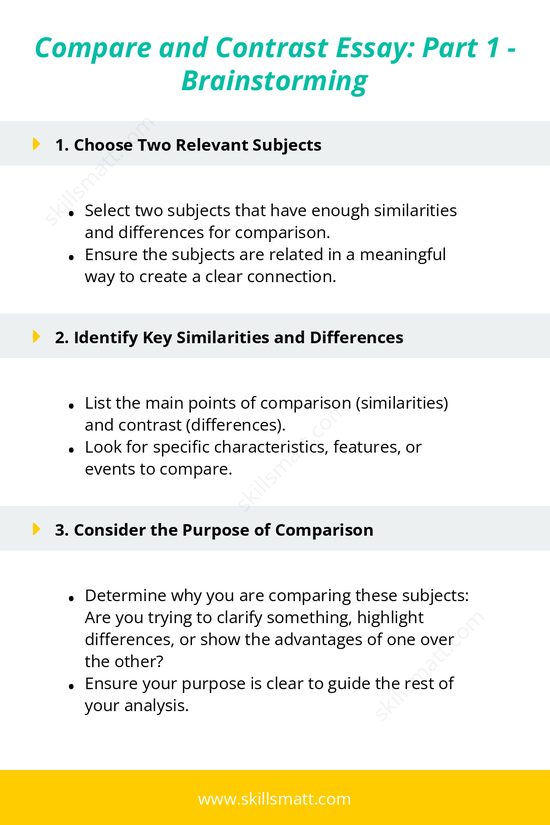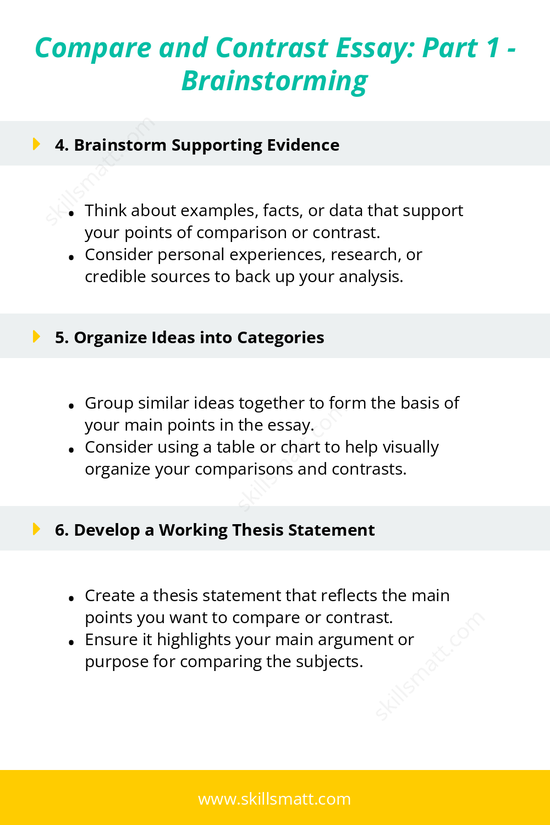Compare and Contrast Essay: Part 1 - Brainstorming
1. Choose Two Relevant Subjects
- Select two subjects that have enough similarities and differences for comparison.
- Ensure the subjects are related in a meaningful way to create a clear connection.
2. Identify Key Similarities and Differences
- List the main points of comparison (similarities) and contrast (differences).
- Look for specific characteristics, features, or events to compare.
3. Consider the Purpose of Comparison
- Determine why you are comparing these subjects: Are you trying to clarify something, highlight differences, or show the advantages of one over the other?
- Ensure your purpose is clear to guide the rest of your analysis.
4. Brainstorm Supporting Evidence
- Think about examples, facts, or data that support your points of comparison or contrast.
- Consider personal experiences, research, or credible sources to back up your analysis.
5. Organize Ideas into Categories
- Group similar ideas together to form the basis of your main points in the essay.
- Consider using a table or chart to help visually organize your comparisons and contrasts.
6. Develop a Working Thesis Statement
- Create a thesis statement that reflects the main points you want to compare or contrast.
- Ensure it highlights your main argument or purpose for comparing the subjects.


